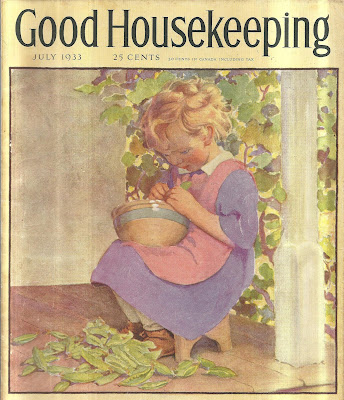
The first tomato to set this year was the Barlow Jap, as always.

And there are a couple of bell peppers of a usable size. This one is going into fresh salsa this weekend along with an onion, since those are just beginning to form bulbs.

Here is this year's version of the bush bean and cucumber bed. Last year I put the cukes down the middle, but they always head east (with the wind, and towards the morning sun) so I put them on the east edge this year instead of the middle. Minuscule baby slugs almost did in the transplants I bought, but some survived, and I filled in the gaps with seeds. The itsy bitsy teeny tiny (you really have NO idea) slugs were dealt with by scraping them off with my fingernails. I killed several dozen two nights in a row, drowned the mid sized ones in beer, and have kept them at bay with Iron Sulphate pellets which are working great and have also saved my pansies and lettuce.
I also planted very very short sunflowers in with the cucumbers, and allowed half a dozen Borage volunteers which were in the right places to draw pollinators in.

This is the Magda summer squash. There are two squash on there that will soon be ready to eat.

And on the other end of that bed is my lettuce. Blogger refused to put this photo in right. And the grow through grids are over the Borage. Last year the Borage was a jumbled mess, so we'll see if we can keep them tidy with grids. In the middle of that lettuce, is a plain old zucchini plant and along one edge is the third planting of cucumbers I really wasn't expecting the lettuce to last this long, but I only got bitter leaves once. If a plant starts to bolt, I pull it right away. And boy do we have lettuce!!!

This is the Magda summer squash. There are two squash on there that will soon be ready to eat.

And on the other end of that bed is my lettuce. Blogger refused to put this photo in right. And the grow through grids are over the Borage. Last year the Borage was a jumbled mess, so we'll see if we can keep them tidy with grids. In the middle of that lettuce, is a plain old zucchini plant and along one edge is the third planting of cucumbers I really wasn't expecting the lettuce to last this long, but I only got bitter leaves once. If a plant starts to bolt, I pull it right away. And boy do we have lettuce!!!
That's what I get for not thinning it. But it really isn't a problem. I can hack at it with scissors, fill a bag to last us a week, and still not make a dent. I have seven varieties. These I got from Renee's Garden Ruby and Emerald Duet (Buttercrisp), Paris Market, and my favorite, Heirloom Cutting Mix.
I also got some transplants from a local greenhouse, and put in "Leaf Lettuce", Iceberg Lettuce, Buttercrisp and Romaine. Tim seems to like the Romaine the best with a little bit of the fancy stuff mixed on, but last night I gave him a bowl of pure Iceberg (the city boy favorite). I'm getting pretty good sized heads which is sort of a surprise.
So, lettuce is a HUGE success. I expect it will wear out at some point, and then the zucchini and cuccumbers can take over. If it doesn't give up, the zukes and cukes can provide filtered shade. You can bet I will be planting it again in the fall.
So we have been enjoying salads, fresh peas and a steady supply of strawberries. I've also been trying to use up my frozen green beans from last year so we won't have leftovers because the bush beans are blooming at it won't be too long before we will be enjoying them as well.




























